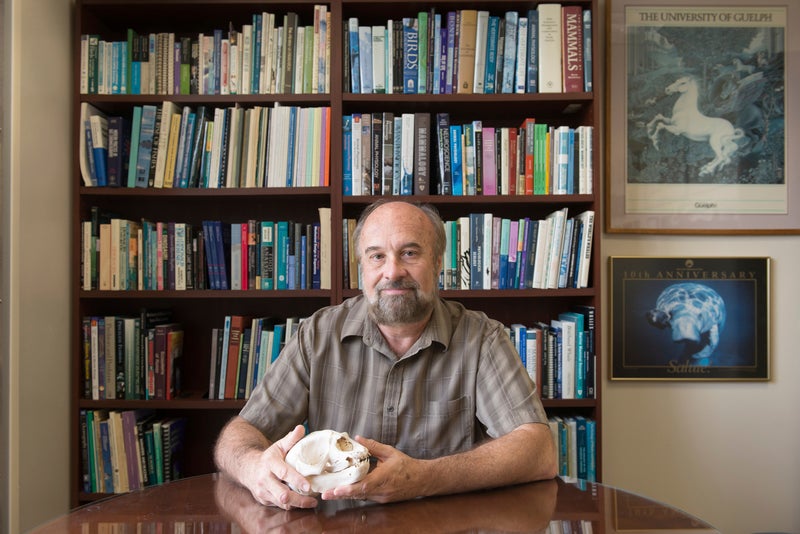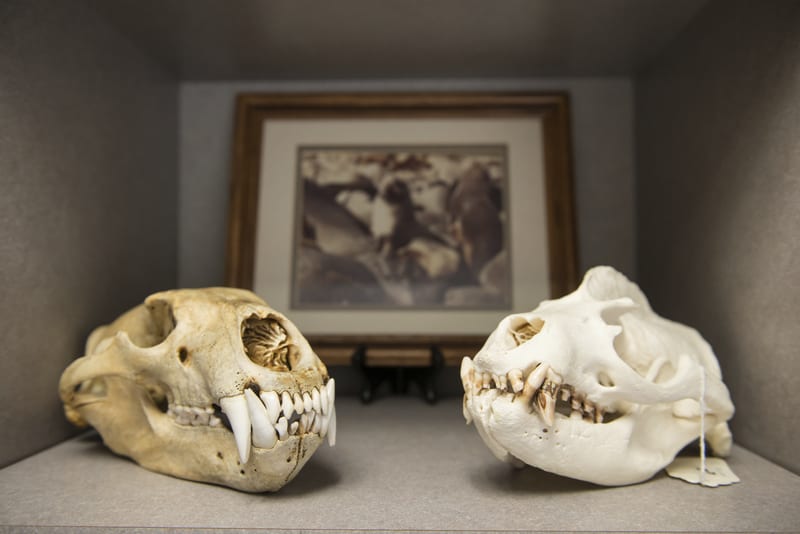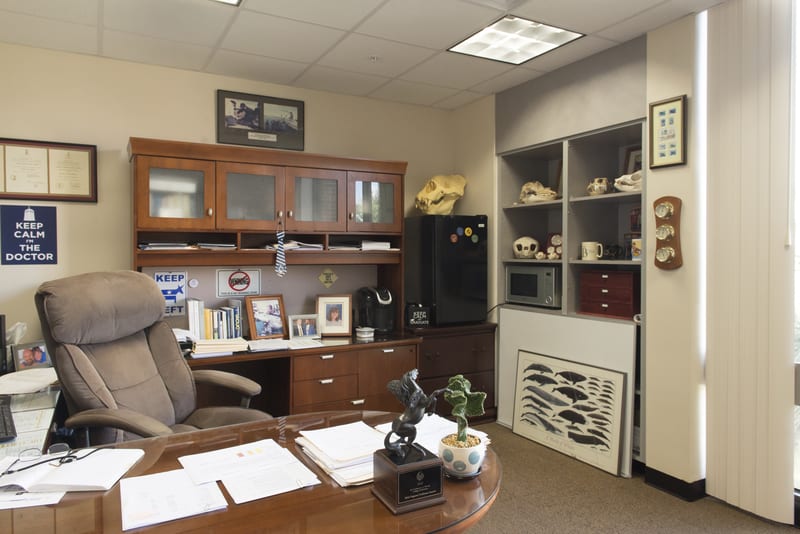How UCF Faculty Turn Their Offices into Works of Art
Story by Rachel Williams, UCF Today

In honor of National Inspire Your Heart with Art Day on Jan. 31, five University of Central Florida faculty members share how they use their offices to display their own variants of art – handmade masks, paintings, even skeletons – to inspire themselves, students and coworkers to continue learning.
One of the professors featured is Graham Worthy, Ph.D., chair of the Department of Biology at UCF.
Graham Worthy’s office is like a minimuseum for marine biologists. Skulls, fossils, teeth and vertebrae from manatees, seals, a fin whale, dolphin and more sit in every corner. Each piece reminds him of a story.
 The largest, a skull cast of a 3,000-pound, 16-foot-long northern elephant seal, sits atop Worthy’s minifridge. Named Gem, the seal returned the same time every year to a beach north of Santa Cruz, Calif., where Worthy and fellow marine biologists studied Gem and his pack for three years.
The largest, a skull cast of a 3,000-pound, 16-foot-long northern elephant seal, sits atop Worthy’s minifridge. Named Gem, the seal returned the same time every year to a beach north of Santa Cruz, Calif., where Worthy and fellow marine biologists studied Gem and his pack for three years.
“Gem is my favorite,” Worthy said. “He was the top bull, the alpha male. He and the other seals would return to the beach each year around Christmas and stay until the end of April. We saw him every year.”
Gem died on the beach near Santa Cruz around 13 years old. Worthy and his teammates recovered his body and gave his entire skeleton to the University of California, Santa Cruz. Even the cast of Gem’s skull Worthy displays now shows so much detail, a bite mark from a fight can be seen.
Gem is just one of more than 20 artifacts Worthy has collected in his office, all from his personal research of marine mammals and “how they make a living,” he said.
“It’s who I am; it’s where I come from. If you’re going to personalize your office, which I think you should in a role like this, it’s not just a place you go to hide away and write,” Worthy said. “That’s part of what we do, but here, I’m also projecting a vision for the department.”
Plus, each artifact helps him teach more clearly and creatively. The details of each skull help his students learn how to recognize different species based on their distinct features.
“It’s fun, too, because I can bring personal experiences and stories to go along with the teachings,” he said.
Those stories stretch to Russia, Antarctica, Canada, California, Texas and more. And although skulls and vertebrae may not traditionally be considered art, they are creative and inspirational in Worthy’s eyes.
